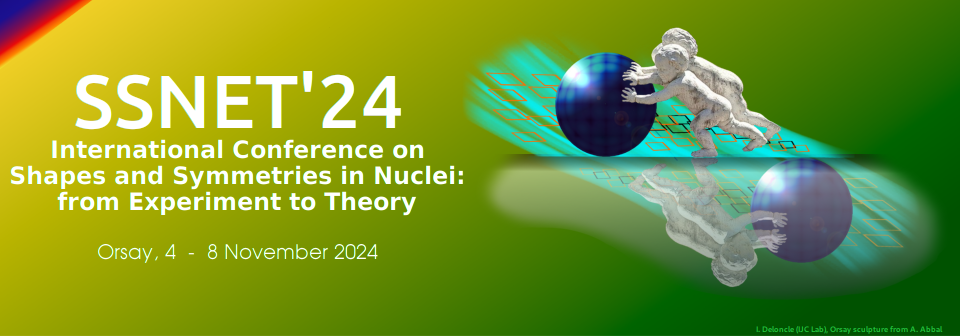Orateur
Description
Recently, our understanding of three-nucleon forces (3NFs) in nuclei was notably advanced by the advent of the chiral effective field theory [1], which offers a systematic and unified approach to constructing two-body forces (2NFs) and 3NFs on equal footing. These modern 3NFs and 3NFs have been extensively utilized in many-body calculations, firmly establishing the role of 3NFs in describing spectroscopic properties. Special attention has been drawn to the relationship between chiral 3NFs and variations in shell structure observed when transitioning from stable to exotic nuclei. These 3NFs are found to be crucial in explaining the nonuniversality of magic numbers (see, for instance, [2] and references therein), highlighting their potential to influence the spin-orbit (SO) splitting,
Here, in order to better understand the specific mechanism through which chiral 3NFs influence the SO splitting, I discuss a decomposition scheme of the chiral 3NF at next-to-next-to-leading order [3] by the rank of the irreducible tensors, leading to a categorization of the 3NF in terms of the number of exchanged pions and rank. It is worth noticing that this procedure is based on decomposition of the 3NF rather than on the decomposition of the corresponding matrix elements, as it is instead usually done for analyzing the tensorial structure of 2NFs.
As a test case, calculations for p-shell nuclei have been performed within the shell-model framework to investigate the role of the different rank 3NF components.
Results show that the SO is essentially influenced by the rank-1 component, which originates exclusively from the 2 pion-exchange term. We can therefore conclude that our findings do not depend on the choice of the new low-energy constants introduced by the 3NF, although to assess the robustness of our conclusions it is essential to extend the analysis to heavier mass regions.
References
[1] R. Machleidt, D. R. Entem, Phys. Rep. 503 (2011) 1.
[2] T. Otsuka, A. Gade, O. Sorlin, T. Suzuki, Y. Utsuno, Rev. Mod. Phys. 92 (2020) 015002.
[3] T. Fukui, G. De Gregorio, A. Gargano, to be published in Phys. Lett. B.

